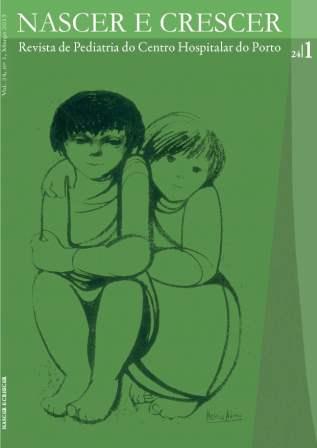EEG case report
DOI:
https://doi.org/10.25753/BirthGrowthMJ.v24.i1.8578Keywords:
epilepsy, Panayiotopoulos syndromeAbstract
Introduction: Panayiotopoulos syndrome is the second commonest idiopathic focal childhood epilepsy, with a peak of age at onset 4-5 years. Its incidence is usually underestimated, because of the typical unusual clinical manifestations of the seizures with predominant autonomic changes.
Case report: We describe a classical case of Panayiotopoulos syndrome, with recurrent seizures, but good response to antiepileptic drug treatment and remission after a few years.
Conclusion: The importance of the clinical suspicion of this epileptic syndrome and the usefulness of an electroencephalographic recording including a period of sleep is underlined. In most diagnosed cases prognosis is good, although therapy is usually necessary for a variable period of time.
Downloads
References
Engel Jr. A proposed diagnostic scheme for people with epileptic seizures and epilepsy: Report of the ILAE Task Force. Epileptic Disord 2001; 6: 121-4.
Covanis A, Ferrie, CD, Koutroumanidis M, Oguni H, Panayiotopoulos CP. Panayiotopoulos syndrome and Gastaur type idiopathic childhood occipital epilepsy. In: J Roger, M Bureau, Ch. Dravet, P. Genton, C.A. Tassinari & P. Wolf. Epileptic Syndromes in Infancy, Childhood and Adolescence (4th ed.). John Libbey Eurotext Ltd 2005, pp 227-53.
Covanis A. Panayiotopoulos Syndrome: a benign childhood autonomic epilepsy frequently imitating encephalitis, syncope, migraine, sleep disorder, or gastroenteritis. Pediatrics 2006;118;e1237.
Caraballo R, Cersósimo R, Fejerman N. Panayiotopoulos syndrome: A prospective study of 192 patients. Epilepsia 2007; 48(6): 1054-61.
Specchio N, Tivisano, DiCiommo, et al. Panayiotopoulos syndrome: A clinical, EEG, and neuropsychological study of 93 consecutive patients. Epilepsia 2010; 51(10):2098-107.
Downloads
Published
How to Cite
Issue
Section
License
Copyright and Authors' Rights
All articles published in Nascer e Crescer - Birth and Growth Medical Journal are Open Access and comply with the requirements of funding agencies or academic institutions. For use by third parties, Nascer e Crescer - Birth and Growth Medical Journal adheres to the terms of the Creative Commons License "Attribution - Non-Commercial Use (CC-BY-NC)".
It is the author's responsibility to obtain permission to reproduce figures, tables, etc. from other publications.
Authors must submit a Conflict of Interest statement and an Authorship Form with the submission of the article. An e-mail will be sent to the corresponding author confirming receipt of the manuscript.
Authors are permitted to make their articles available in repositories at their home institutions, provided that they always indicate where the articles were published and adhere to the terms of the Creative Commons license.


